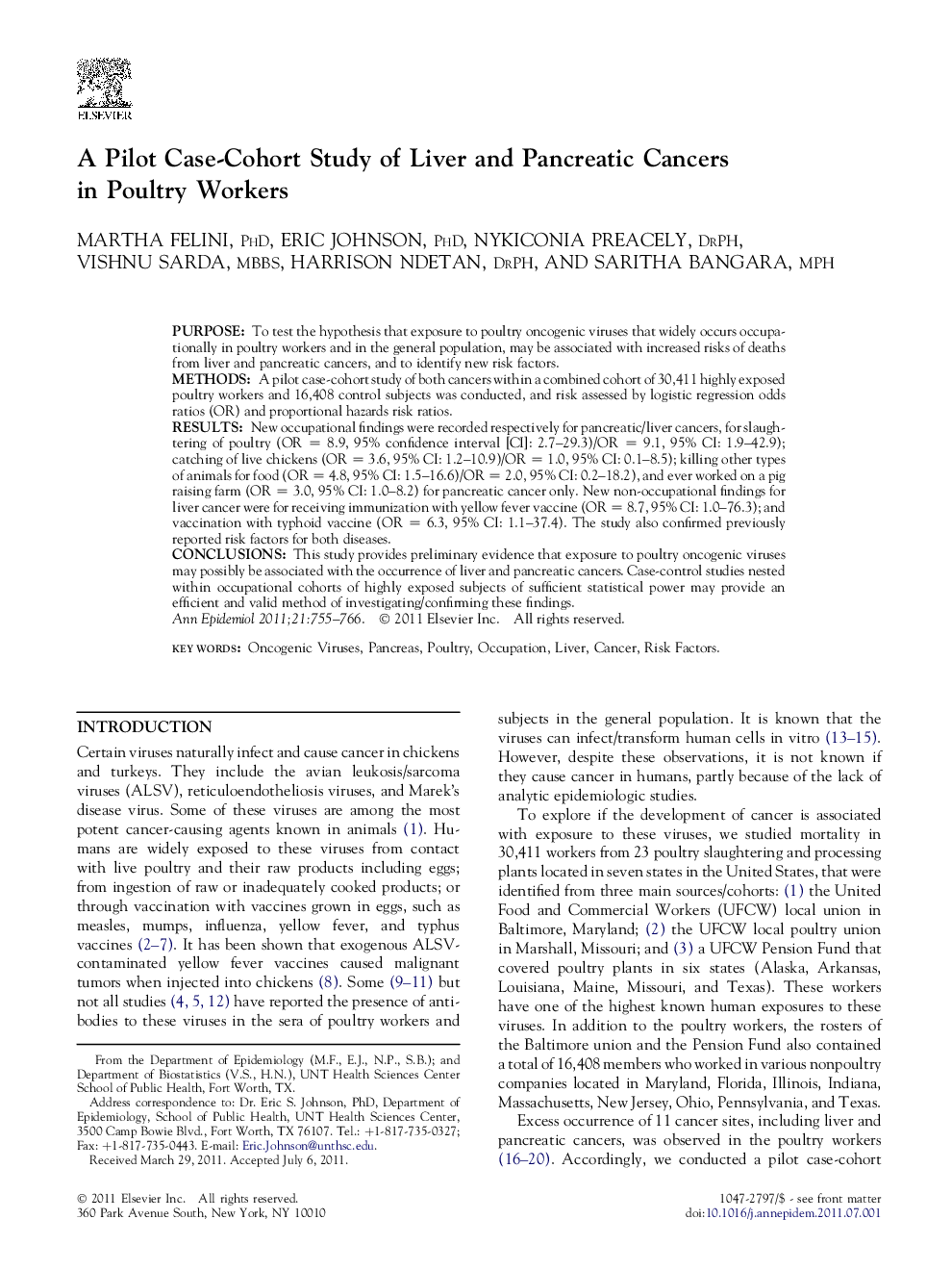| Article ID | Journal | Published Year | Pages | File Type |
|---|---|---|---|---|
| 3444548 | Annals of Epidemiology | 2011 | 12 Pages |
PurposeTo test the hypothesis that exposure to poultry oncogenic viruses that widely occurs occupationally in poultry workers and in the general population, may be associated with increased risks of deaths from liver and pancreatic cancers, and to identify new risk factors.MethodsA pilot case-cohort study of both cancers within a combined cohort of 30,411 highly exposed poultry workers and 16,408 control subjects was conducted, and risk assessed by logistic regression odds ratios (OR) and proportional hazards risk ratios.ResultsNew occupational findings were recorded respectively for pancreatic/liver cancers, for slaughtering of poultry (OR = 8.9, 95% confidence interval [CI]: 2.7–29.3)/OR = 9.1, 95% CI: 1.9–42.9); catching of live chickens (OR = 3.6, 95% CI: 1.2–10.9)/OR = 1.0, 95% CI: 0.1–8.5); killing other types of animals for food (OR = 4.8, 95% CI: 1.5–16.6)/OR = 2.0, 95% CI: 0.2–18.2), and ever worked on a pig raising farm (OR = 3.0, 95% CI: 1.0–8.2) for pancreatic cancer only. New non-occupational findings for liver cancer were for receiving immunization with yellow fever vaccine (OR = 8.7, 95% CI: 1.0–76.3); and vaccination with typhoid vaccine (OR = 6.3, 95% CI: 1.1–37.4). The study also confirmed previously reported risk factors for both diseases.ConclusionsThis study provides preliminary evidence that exposure to poultry oncogenic viruses may possibly be associated with the occurrence of liver and pancreatic cancers. Case-control studies nested within occupational cohorts of highly exposed subjects of sufficient statistical power may provide an efficient and valid method of investigating/confirming these findings.
